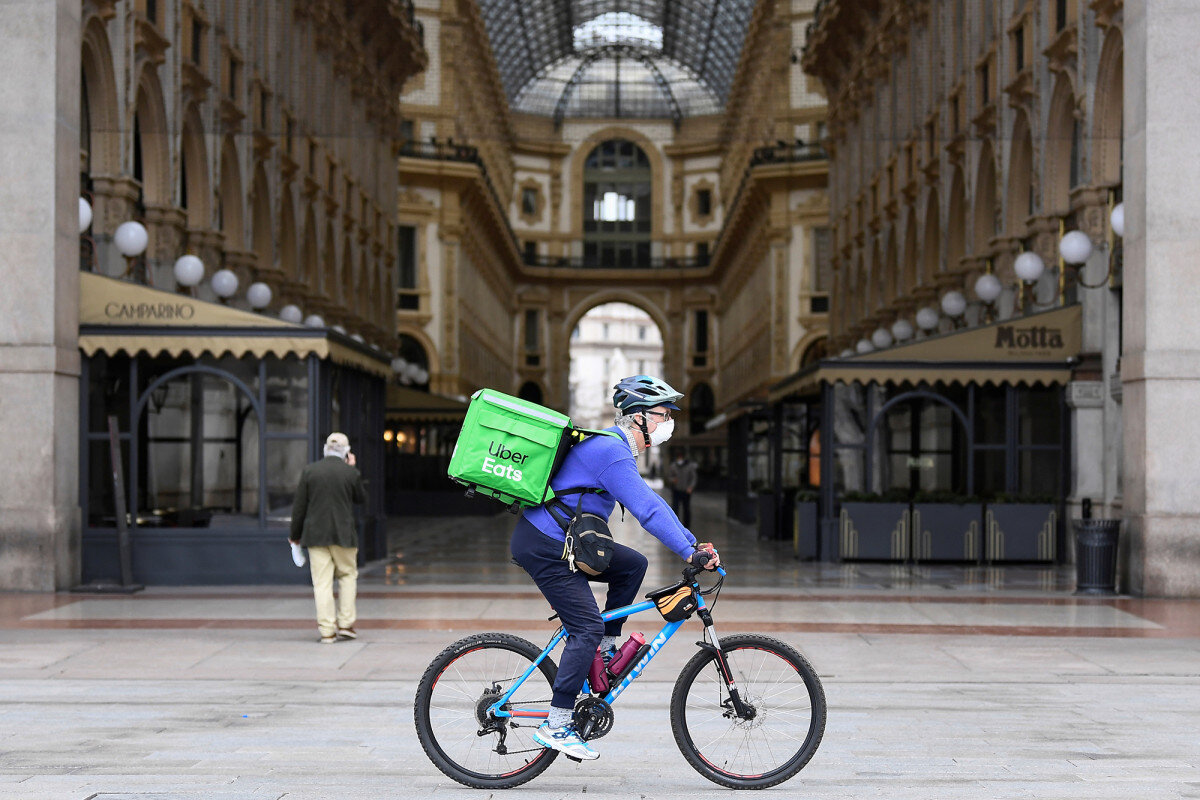Hotter than Sriracha – Food Delivery Wars during COVID-19
The worldwide coronavirus (COVID-19) lockdown has forced restaurants to shut down their dining rooms and billions of people to stay at home. However, it has not dampened consumers’ desire for deliciously crafted meals. Restaurants, desperate for survival, have been asked to rethink how to continue serving the hungry customers self-isolated at home. Suddenly, traditional dine-in restaurants have found themselves partnering with food delivery companies to transport cooked meals to the doors of customers.
The COVID-19 pandemic has caused a boom in the business of the food delivery providers. DoorDash has witnessed an astounding 72% increase in sales during the week ending March compared to last year. Uber Eats sales have beaten its ride-hailing business for the first time, rising 33% between mid-January to March. Even before the pandemic, the industry has seen a massive 42% growth in just two years, reaching $62.8 billion. The phenomenal growth and forecasted momentum have stiffened competition. In 2018, GrubHub controlled 52% of the US food delivery market, followed by Uber Eats with 20%. Overtime, DoorDash’s penetration of less populated US cities and exclusive partnerships with restaurants such as Cheesecake Factory and Chipotle’s Mexican Grill have shaken up the leadership composition. By February 2020, GrubHub retreated to a 30% market share and Uber Eats maintained its 20% market share. Meanwhile, DoorDash emerged as the new leader with a 39% market share.
However, beneath the enthusiasm lies a troubling reality. Rising appetite from existing and new businesses have escalated competition and spending, rendering negative profits a new norm in the industry. In 2019, GrubHub reported a record operating loss of $19 million in 2019, citing “promiscuous customers”. A private company, DoorDash had an estimated loss of $450 million the same year. Yet neither has suffered as much as Uber, who not only has the lowest market share among the three but also incurred the greatest loss. In 2019, Uber Eats booked an operating loss (EBITDA) of $771 million, a whopping 128% jump from 2018. To put it into perspective, Uber Eats loses about $1 for every $1 generated in net revenue. The consecutive losses are, at least for now, sustained through the financial backing of venture capitalists and large corporations. Investors have been eyeing a “winner-takes-most” opportunity by injecting billions of dollars into their endorsed contestants to fuel competition. The opportunity has even enticed the entry of tech-giant Amazon through the recent purchase of a $575 million equity stake in the UK delivery start-up Deliveroo. Some competitors have also turned to consolidation to toughen their market position, such as Takeaway’s recent $8 billion acquisition of Britain’s Just Eat. Ultimately, the last ones staying afloat in this race to the bottom will bring home the trophy.
Perhaps the platform-to-customer delivery business model makes profiting fundamentally difficult. Delivery businesses generate money from four streams of revenue: delivery fees, commissions from restaurants, premium hour operations, and advertisements. While restaurant commissions typically range between 15% to 30%, heightened competition has translated into reducing commission rates. Signing big-brand restaurants means further cutting the rates. Menu markups could boost sales, but vigilant consumers have already exposed the exorbitant markups, forcing businesses to re-evaluate their strategy. Put simply, increasing topline growth appears challenging. At the same time, competition exacerbated by disloyal customers has led to a disproportionate increase in marketing, technology, and operating costs. Slowing topline growth in conjunction with accelerating costs have left third-party aggregators accumulating losses.
The recent surge in online food delivery may provide some relief for food delivery companies. However, the increase in demand may have been accompanied by a greater increase in supply. Arguments over commission rates and menu prices have driven a wedge between restaurants and their delivery counterparts. Restaurants, whose already slendermargins have been further threatened by ruthless delivery giants demanding lower commissions, have retaliated by starting their own delivery lines. Domino’s Pizza has also fattened its workforce by an additional 10,000 employees to beef up the indirect competition. Indignant restaurant clients, who bear the cost of price discounts and free delivery promotions offered by delivery companies, have collectively filed lawsuits. With new entrants marching in, lawsuits lined up, and consumers skipping across platforms, food delivery companies have never been more terrified. As the economy recovers, consumers will continue to order food online. However, dissatisfied and opportunistic restaurants will increasingly offer their delivery services, and entrants from neighbouring industries will continue to invade. Although loss-making firms will eventually exit, the ongoing battle will have drained substantial amount of resources. The self-protecting, power-seeking behaviour revives a painful memory of the prisoner’s dilemma, where the lack of cooperation leads to the downfall of each player. If the current trend persists, delivery businesses will see profits plummet to levels that no financial capital can recover.
The online food delivery industry has been struggling for years with fierce rivalry and negative earnings. To overcome short-run impediments to profitability, food delivery companies must collaborate with their stakeholders. Delivery businesses need to renegotiate fair commissions with restaurants and establish trust with consumers by being transparent and reasonable with markups. However, an unprofitable business cannot survive in the long run. Funding will eventually dry up as shareholders and venture capitalists come to terms with their poor investment decisions. The delivery wars may only end upon a change to the business model or further industry consolidation. Businesses must define new ways of delivering value to customers, such as offering personalized meal plans or drone-enabled services. Those able to compete on unit marketing and technology costs while driving the highest customer willingness to pay will steer their businesses toward sustainable profitability.
Editor’s Note: All values mentioned are in US Dollars unless stated otherwise.

